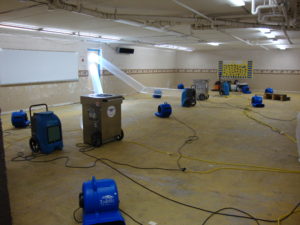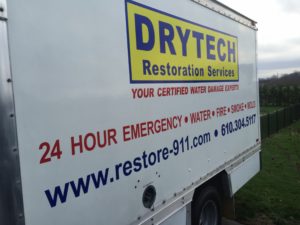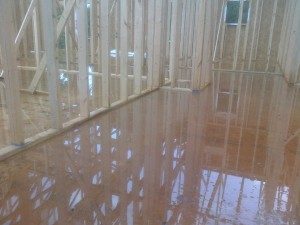What happens to wood when it gets wet? What Happens if your Framing Gets Rained on?
It’s raining on my new house and it isn’t waterproofed yet …
 Wet water damaged OSB can start to disintegrate when exposed to moisture and UV rays. If any. My analysis is the OSB has been exposed to the elements and could have issues of moisture and or failure to hold nails as well as microbial production on that material. Our county does not have a building code, and this is in the county. OSB that does get wet will tend to swell and delaminate first at the edges of the boards. This can be a real headache when one intends to install windows or doors with pre-manufactured liners. In such cases, the exact thickness of the walls can complicate final finishing work. Serious Damage from Rain On New Construction Pllywood And Studs Lumber Serious damage can happen to houses under construction that are exposed to long periods of wet weather. Light, dry snow and ice are not nearly as bad as standing water.One of the most common indoor environmental jobs we work with locally is the growth of mold in a crawl spaces on the underside of the subflooring, floor joists, etc.. I have personally inspected a home that was occupied for 9 months and the moisture content of the OSB subfloor was still 70%. The sad part is this was leftover moisture from the original construction that never had the opportunity to dry out. I was brought into the picture after the occupants moved into this brand new house and became ill, not knowing originally it was from the mold growing under their feet. This problem doesn’t seem to be as much with older homes and wet crawl spaces, although it does happen in the older homes also. It is a problem seen more and more with new construction that had rainy weather prior to the roof being installed and/or sealed
Wet water damaged OSB can start to disintegrate when exposed to moisture and UV rays. If any. My analysis is the OSB has been exposed to the elements and could have issues of moisture and or failure to hold nails as well as microbial production on that material. Our county does not have a building code, and this is in the county. OSB that does get wet will tend to swell and delaminate first at the edges of the boards. This can be a real headache when one intends to install windows or doors with pre-manufactured liners. In such cases, the exact thickness of the walls can complicate final finishing work. Serious Damage from Rain On New Construction Pllywood And Studs Lumber Serious damage can happen to houses under construction that are exposed to long periods of wet weather. Light, dry snow and ice are not nearly as bad as standing water.One of the most common indoor environmental jobs we work with locally is the growth of mold in a crawl spaces on the underside of the subflooring, floor joists, etc.. I have personally inspected a home that was occupied for 9 months and the moisture content of the OSB subfloor was still 70%. The sad part is this was leftover moisture from the original construction that never had the opportunity to dry out. I was brought into the picture after the occupants moved into this brand new house and became ill, not knowing originally it was from the mold growing under their feet. This problem doesn’t seem to be as much with older homes and wet crawl spaces, although it does happen in the older homes also. It is a problem seen more and more with new construction that had rainy weather prior to the roof being installed and/or sealed 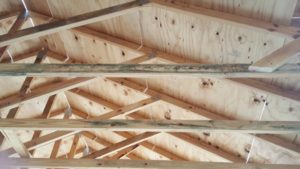 up. It seems that contractors are mislead by seeing a dry top surface of the subfloor and then continuing along with finishing the home, eventually placing flooring over the subfloor with no knowledge that it is still soaking wet just under that surface. With the home mentioned above the 3/4″ OSB subfloor was almost 1 1/2″ thick in some places when they tore it up, all due to the absorbing characteristic of the OSB product. I have known of contractors that have sworn off OSB in flooring, they are only using plywood as they had the issue in a new construction project and the price of remediation and the stigma of “mold” put on the house cost them a lot more than the difference in price between the two materials. Plywood is less susceptible to the issue, however it is not a cure if you let the water soak in, it can still grow mold, it’s just less likely to happen in the short time frame it takes for OSB to do so. The only advice we can give is to hire a water damage restoration company who is certified IICRC for moisture inspection and monitoring in your new construction or contract a water restoration specialist to monitor your building materials if the rains come in contact with them during the construction process. Get the floor dry by a certified water damage expert prior to laying any flooring and you should never have an issue develop.
up. It seems that contractors are mislead by seeing a dry top surface of the subfloor and then continuing along with finishing the home, eventually placing flooring over the subfloor with no knowledge that it is still soaking wet just under that surface. With the home mentioned above the 3/4″ OSB subfloor was almost 1 1/2″ thick in some places when they tore it up, all due to the absorbing characteristic of the OSB product. I have known of contractors that have sworn off OSB in flooring, they are only using plywood as they had the issue in a new construction project and the price of remediation and the stigma of “mold” put on the house cost them a lot more than the difference in price between the two materials. Plywood is less susceptible to the issue, however it is not a cure if you let the water soak in, it can still grow mold, it’s just less likely to happen in the short time frame it takes for OSB to do so. The only advice we can give is to hire a water damage restoration company who is certified IICRC for moisture inspection and monitoring in your new construction or contract a water restoration specialist to monitor your building materials if the rains come in contact with them during the construction process. Get the floor dry by a certified water damage expert prior to laying any flooring and you should never have an issue develop.
Cold weather slows the growth process of most organisms including wood fungi and most molds. But snow can be easily removed from the flat surfaces of homes under construction and this should be done as soon as possible after the storm has concluded. Once temperatures rise, the snow will melt and turn into liquid water.
Wood rot can and will start when the moisture content of the wood reaches 20 percent. But wood rot is a slow process where the fungi start to grow and feed on the cellulose in the wood. The wood needs to remain damp and wet all the time for wood rot to advance. It’s much more likely that you’ll start to see mold growth in as little as 48 hours as mold spores are everywhere on your home construction site.
To minimize or eliminate any chance of damage, you need to get rid of the water as quickly as possible. This means the job site needs to be clean. All scraps of lumber, sawdust, etc., need to be off the OSB. The OSB floors should be swept clean each day after work concludes. This debris can trap water and hold it against the OSB. 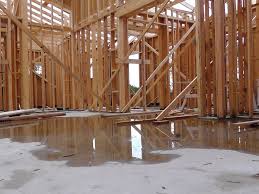
You want all the lumber to dry out as fast as possible after each rain. Standing water on the OSB needs to be swept away. Some OSB panels are created that have a drainage slot in the tongues to help get rid of water.
Lumber on the job site that’s in piles needs to be covered and up off the ground. You don’t want to wrap the lumber like you would a sandwich with plastic. It needs to breathe. It’s key that the lumber is up off the ground at least 4 inches so that air can get under the stacked lumber. Try to create a storage method that mimics a rain fly on a camping tent. You want the sides of the stacked lumber exposed to the air but protected so rainfall can’t hit the lumber.
To minimize or eliminate any chance of damage, you need to get rid of the water as quickly as possible. This means the job site needs to be clean. All scraps of lumber, sawdust, etc., need to be off the OSB. The OSB floors should be swept clean each day after work concludes. This debris can trap water and hold it against the OSB.
You want all the lumber to dry out as fast as possible after each rain. Standing water on the OSB needs to be swept away. Some OSB panels are created that have a drainage slot in the tongues to help get rid of water.
Lumber on the job site that’s in piles needs to be covered and up off the ground. You don’t want to wrap the lumber like you would a sandwich with plastic. It needs to breathe. It’s key that the lumber is up off the ground at least 4 inches so that air can get under the stacked lumber. Try to create a storage method that mimics a rain fly on a camping tent. You want the sides of the stacked lumber exposed to the air but protected so rainfall can’t hit the lumber. DRYING OUT BUILDINGS DRYTECH RESTORATION SERVICES
Drytech Restoration Services -How Professional Restoration Companies Remove Excess water content in materials.
Dehumidification is mainly applied to dry out excess water content in materials in connection with construction work or water damage.
In case of water damage the general rule is to apply dehumidification as soon as possible, but as the nature and extent of water damage varies considerably it is necessary to assess the right approach from situation to situation.
An all important parameter in case of water damage is how much time the water has had to penetrate the building structure, furnishings, etc. It is also essential to keep the air change as low as possible to avoid humid air from entering the room. The rules of thumb will give you some empiric data to go by as it is often almost impossible to calculate the absolute accurate dehumidification load needed in a water damage situation.
In case of drying out a newly constructed building you should also keep air change low, but the most important parameter to consider is the water content in the various materials used. Often you have to meet a deadline i.e. you have to consider a finite amount of time to do the job.
Drying out buildings
Formerly construction work on an average building went on for 6-9 months and the building materials were usually dried out by natural ventilation by the time the building was finished. Today, however, construction work is very efficient and much faster. This means that dehumidification is required to remove the excess water in the various building materials before the building can be occupied.
When selecting a dehumidifier for drying out a building you need to consider how much water should be removed and how much time you have to do it.
This is actually quite a difficult task. In some cases it is possible to estimate the amount of water in the building materials from tables. Please note that in regards to drying out a newly constructed building it all comes down to the specific building materials used for walls, floors and roofs. The water content of various building materials differ so much that a simple rule of thumb is unworkable.
Water content of different building materials (kg/m3) 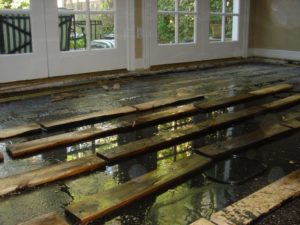
Note that the drying process is quickest in the beginning as the water content is very high when you start the process. As the RH-value decreases the overall dehumidification capacity will also decrease.
Guidelines for the drying process
When dehumidification is used to dry out buildings and materials the dehumidifier runs continuously. The relative humidity is gradually lowered allowing further evaporation from the damp materials in the room. The amount of evaporation depends on the temperature of the room, the materials and the humidity of the air.
One of the advantages of condense drying is that the drying process is stable and gentle. If time is not of 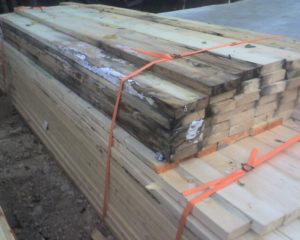 the essence the optimum dehumidification process is achieved by maintaining a stable condition of 20°C and approximately 40% RH in the room. This way you maintain a perfect balance between the dry air in the building and humid building materials, avoiding surface drying and cavitation as well as damage to pre-dried materials such as parquet floors.
the essence the optimum dehumidification process is achieved by maintaining a stable condition of 20°C and approximately 40% RH in the room. This way you maintain a perfect balance between the dry air in the building and humid building materials, avoiding surface drying and cavitation as well as damage to pre-dried materials such as parquet floors.
Add heat if necessary, but keep in mind that forcing the drying process might be harmful. There is a risk of surface drying and cavitation, with only surfaces being dried, whereas a lot of humidity remains within cavities inside the wall. This prolongs the drying period as the humidity will not easily penetrate the dry surface. Surface drying also involves the risk of cracks appearing in the surfaces of walls, ceilings and floors.
It is important that the room/building is as sealed as possible. Also make sure that the building is well protected against rain and snow. You need to ventilate while painting inside the building, but remember to seal the room or building properly when it is empty. Also remember to avoid pre-dried materials absorbing water because of open windows.
If the air change inside the room is not controlled, then changing ambient temperatures and humidities make the process much more difficult to control. In the winter the cold outside air will normally contain a minimum of water and the humidity is not likely to increase much even if the air change is considerable. Energy consumption, however, will increase dramatically as you need to heat up the cold incoming air. In the summer the water content could be quite high and you will have to remove even more water from the building or locale if it is not sealed off adequately.
In most cases the humidity is concentrated in cellars and in areas where water is being used in the construction work going on i.e. painting, concrete mixing, etc. Set up your dehumidifiers at these positions where they can do most good.
When a new building smells moldy, the owner’s first phone call is often to the building’s HVAC designer. To most people, moldy odors suggest HVAC problems. But while the air system may indeed spread fungal odors, the HVAC system in new buildings is seldom responsible for generating them. In new construction, mold infestations usually are caused by moisture in building materials. That moisture can come from rain or snow before the building is closed in, or from leaking water pipes, wet concrete or condensation on surfaces like cold floor slabs during springtime.Mold Remediation Tagged Air Scrubber, Airmovers, Basement Flood Cleanup, best fire and water damage restoration, best fire and water damage restoration ciompanies, Burst Pipe, Clean Up Flood damage, Cleaning And Restoration, Contractors, Dehumidification, Disaster Restoration, Drain BackUp, Drying Chamber, Emergency Water Damage Cleanup, Fire and Smoke, Fire Cleanup, fire damage, fire damage restoration companies, fire damage restoration process, fire damage restoration services, fire damage restoration standards, fire restoration contractors, fire restoration procedures, Flood Clean Up, Flood Damage Cleanup, Flood Drying, Flood Drying Building, Flood From Rain, Flood In My Basement, Flood Restoration, Flood Water Extraction, Frozen Pipe, Hurricane Cleanup, Industry Cleaning And Restoration News, Moisture Absorption, Moisture Removal, Mold Abatement, Mold Containment, mold remediation, mold remediation expert, mold remediation professional, New Construction, New House Build, Plumbing Disaster, property damage, Rain Damage, Rain On New Construction, Residential Flooding, Sewage Cleanup, Sewage Remediation, Sewage Removal, Storm Damage, Storm Wind Fire Smoke Water Mold, Structural Drying, Toilet Overflow, Water, water damage, Water Damage Company, Water Damage Drying, Water Damage Near Me, Water Damage Repair, Water Damage Restoration, Weather Damage, Wet Basement, Wet Carpet Extraction, wet lumber from rain, Wet OSB, What Happens if your Framing Gets Rained on?, What happens to wood when it gets wet?, Wind Damage
fire damage
fire damage restoration standards
Why You Should You Call a Professional Restoration Company?
Cleaning up after a flood is a lot of work and it is possible to do much of it yourself. However, the costs in 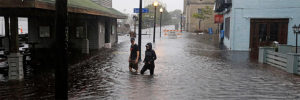 time, supplies and machinery rental escalate quickly. Furthermore, you may need professional contractors to do the work to be eligible for home and flood insurance reimbursements or to acquire building permits. If you would like expert help with your flood cleanup or simply want a second pair of eyes for safety, call Drytech Restoration Services Our family owned business of flood and water damage cleanup professionals is available 24/7.
time, supplies and machinery rental escalate quickly. Furthermore, you may need professional contractors to do the work to be eligible for home and flood insurance reimbursements or to acquire building permits. If you would like expert help with your flood cleanup or simply want a second pair of eyes for safety, call Drytech Restoration Services Our family owned business of flood and water damage cleanup professionals is available 24/7.
Water is capable of incredible damage in just a short period of time, even if the water is just standing there. In fact, everything but the most resilient materials is subject to being compromised within several days, and organic materials like drywall and textiles can begin deteriorating within 48 hours. That’s because storm waters usually carry swarms of potentially harmful organisms, like bacteria, viruses or various pests. Even incidental contact with this contaminated water can lead to health problems, and these microbes may spread throughout the home before long.
Water Removal 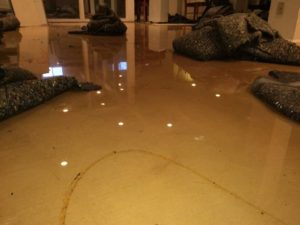
One of the most significant reasons you should obtain restoration services is because they help remove excess water from your property. Allowing water to remain on your property will make it more susceptible to structural damage and mold invasion.
First, make sure to select a water damage restoration service company that is licensed and insured. A trustworthy restoration service will be certified by the Institute of Inspection, who are a cleaning and restoration firm.
Choose a water damage restoration service that is capable to deliver local referrals. Word of mouth is still the most consistent marketing technique there is. Ask around, chances are your family, neighbors or friends have been pleased with a company’s water damage restoration service that has been done for them, chances are that you’ll be satisfied with their service as well.
Pick a water damage restoration services that will answer immediately when disaster takes place. The key to an effective remediation is a quick response. Even with just an hour deferment can surge flood-related desolation exponentially. Only deal with true industry experts (IICRC) who can arrive at your premises quickly if not 24/7.
Select a repair service that has knowledge working with insurance companies as well as understands how to accelerate the claims process.
Should I Call My Insurance Company or Restoration Company First? 
Calling your insurance company first may have some negative consequences that you may not be aware of. Most insurance companies have a list of 3rd party contractors that they work with on a regular basis. The relationship between these companies often leads to the contractors having the insurance companies best interests in mind, and not yours. This means that you’ll get the cheapest repairs possible, and not the most appropriate. 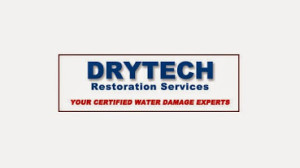
Fortunately, you have the right to choose which company you like handle these situations. That means that you can choose a company like Drytech Restoration that will have your best interests in mind, and the insurance company can’t fight you on it, even if doing the job the right way costs them more money.
If your home has water, fire, or smoke damage, call us today on our 24/7 emergency contact line at 610-304-5117 We’ll work with you and your insurance company to put your home back in order and keep your out of pocket costs to a minimum.

